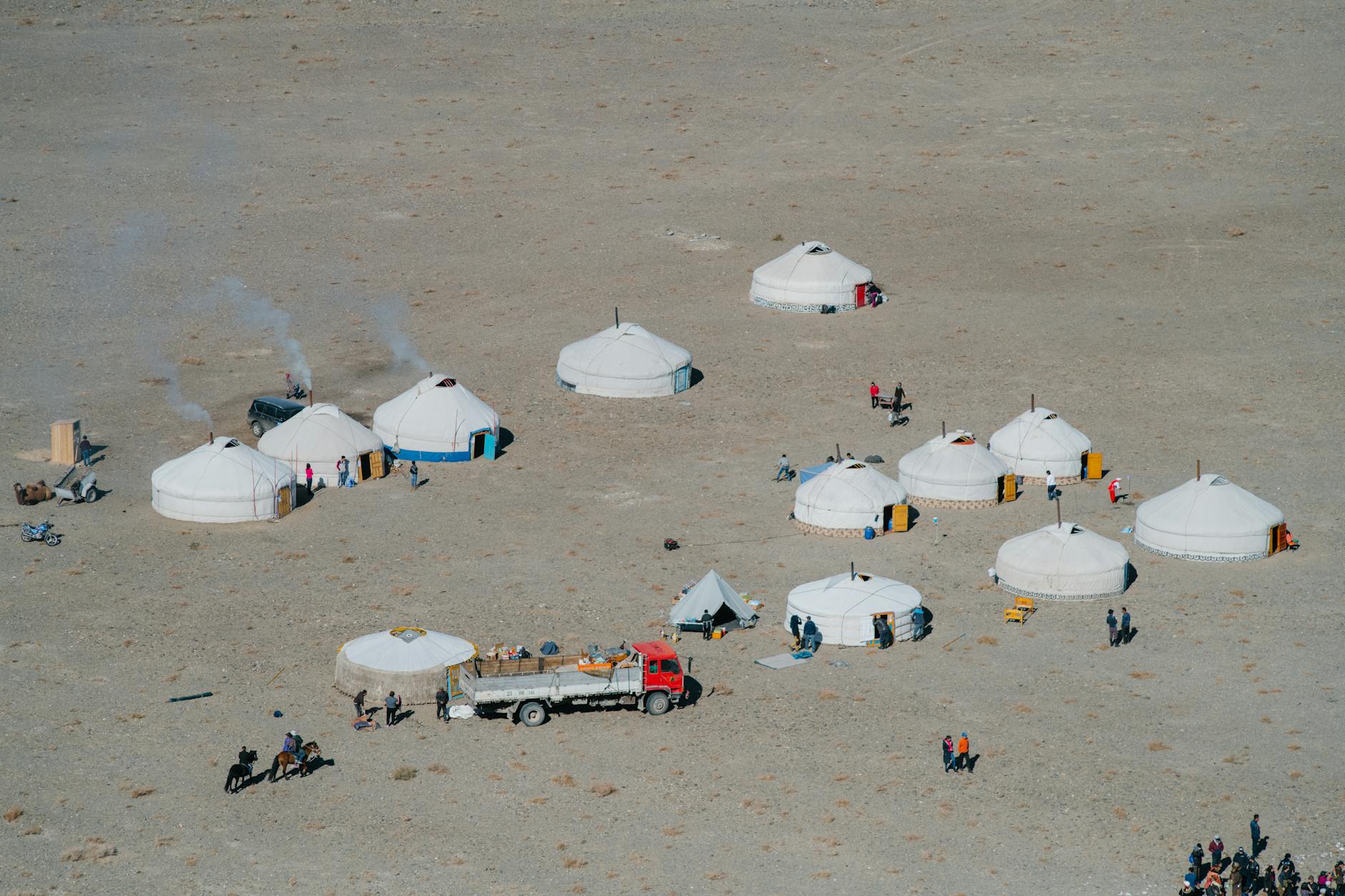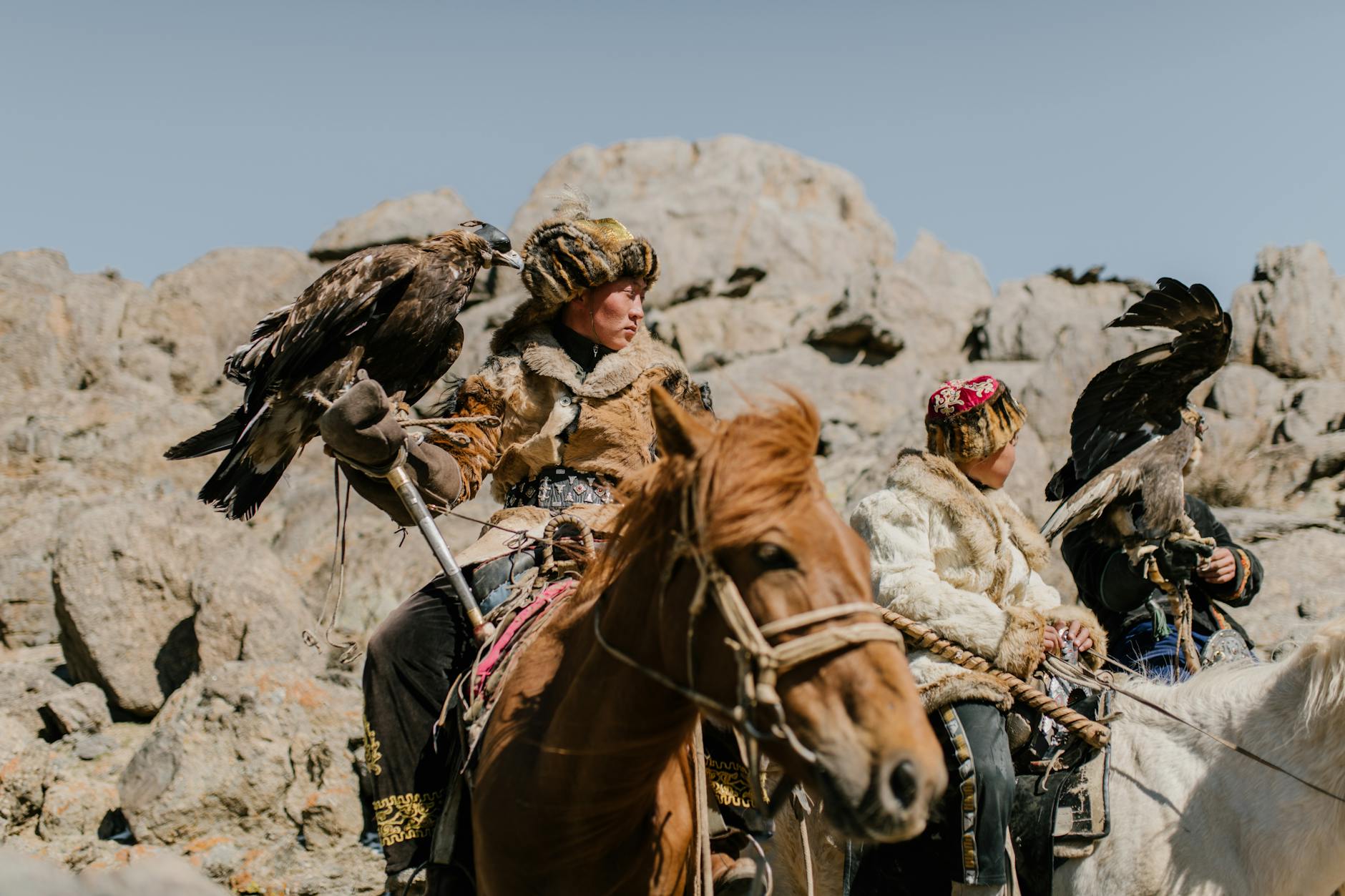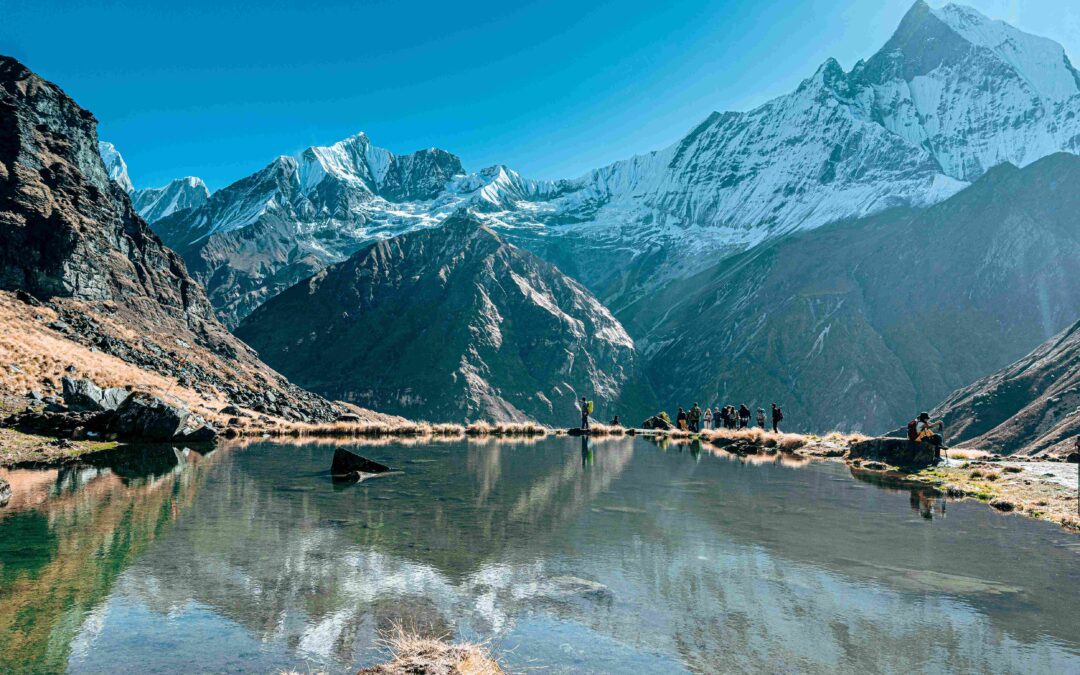How Donations Are Changing Lives of Himalayan & Mountain Nomads
The Himalayan and mountain nomads live extraordinary lives shaped by rugged landscapes, ancient traditions, and unyielding challenges. Their stories often remain untold, but donations are helping to change that, offering fresh hope and tangible solutions. From supporting education to sustaining livelihoods, these contributions go far beyond material aid—they preserve a way of life, protect disappearing cultures, and uplift communities in remote regions. By tracking the real-life impacts of these donations, we get a closer view of how generosity transforms lives, one story at a time.
The Unique Lives of Himalayan & Mountain Nomads
Mountain nomads living in the Himalayan region and nearby high-altitude areas lead lives shaped by centuries of tradition and the immense challenges of their environment. These communities embody a rare union of resilience and adaptability, marked by their reliance on nature and deeply rooted cultural values. While their lifestyle may appear timeless, modern realities increasingly press upon them, transforming both opportunities and adversities.
Understanding the Nomadic Lifestyle

Photo by Volker Meyer
Himalayan nomads, such as the Changpa of Ladakh and the Van Gujjars, follow a rhythm dictated by the seasons. Their movements are carefully measured—migration often occurs in response to grazing needs, shifting weather patterns, and the pursuit of resources. This seasonal migration ensures the survival of their livestock, which includes yaks, sheep, and goats, their primary source of both livelihood and sustenance.
Homes for these communities are often temporary structures. The Changpa, for example, live in yak-wool tents called “rebo,” designed to withstand the extreme cold at high altitudes. These portable shelters allow them to adapt to the ever-changing terrain. Life revolves around their herds, which provide milk, wool, meat, and even trade materials such as Pashmina wool, prized globally.
Access to natural resources like water, pasture, and firewood deeply influences their lifestyle. With limited technology, they employ age-old techniques for resource management, including rotational grazing and careful conservation of water. Their deep connection to the land reflects respect and dependence, forming the backbone of their approach to survival.
Cultural Significance and Traditions of Nomads
Cultural traditions are the lifeblood of these nomadic communities, passed from one generation to another like an unbroken thread. In every corner of their lives, their heritage reveals itself—whether through the festivals they celebrate, the songs they sing, or the ceremonies they conduct. For instance, the Changpa of Ladakh honor Buddhist rituals, alongside unique rites tied to seasonal changes and nature.
Values such as community solidarity and mutual reliance are central to their existence. Tasks like herding, foraging, and constructing homes are shared among community members. Elders are revered as keepers of wisdom, passing down not just techniques of living but also oral histories, beliefs, and moral principles.
Festivals play an essential role in maintaining unity and spiritual connection. Events like Losar, the Tibetan New Year, or other livestock ceremonies underscore their reverence for life, nature, and spiritual balance. Traditional dances, music, and storytelling are not just cultural expressions but vital forms of education and continuity.
Even their clothing, such as woolen garments made from the fleece of their livestock, tells the unique story of their life—and serves a vital functional purpose in the harsh temperatures of the mountains.
Challenges Faced by Mountain Nomads
The life of mountain nomads is not without its hardships. Climate change is an ever-growing concern, altering the delicate balance on which these communities depend. The melting of Himalayan glaciers disrupts water cycles, affecting both their pastures and farming activities. Rising temperatures and reduced grazing lands put additional stress on their livestock, prompting declines in productivity and food security.
Land encroachment is another pressing issue. As urbanization and commercial interests expand, much of the land traditionally grazed by nomads is being repurposed for development or industry. Nomadic groups like the Van Gujjars have faced eviction and displacement as governments seek to formalize protected areas or pursue infrastructure projects.
Additionally, shifting political landscapes and restricted border regions bring new challenges. Nomadic herders may find their migration patterns blocked by policy restrictions, forcing them into sedentary lifestyles they are unprepared for. While some welcome modernization, others are drawn further into cycles of poverty due to a lack of alternative livelihoods.
Beyond physical challenges, the younger generation often struggles between preserving traditional ways and seeking opportunities in urban areas. Education and healthcare access remain limited in these remote regions, creating barriers to advancement and stability for families looking to adapt to changing conditions.
Nomadic groups, while incredibly resourceful, stand at a crossroads. The intersection of ancient traditions and modern pressures demands thoughtful action—not only from these communities but also from external supporters and organizations who see the value in preserving such a unique and vibrant way of life.
The Role of Donations in Supporting Nomads
Nomadic communities in the Himalayas and mountainous regions face significant challenges as they strive to balance tradition with modernization. Donations play a crucial role in empowering these groups, providing resources that expand opportunities without eroding their cultural identity. Contributions not only fund essential services but also enable sustainable, community-driven solutions that improve their overall quality of life. Let’s explore how donations make a tangible difference across various aspects of these nomads’ lives.
Education and Awareness Initiatives

Photo by RDNE Stock project
Education is a fundamental tool for breaking the cycle of poverty that many nomadic families face. Donations provide funding for programs that create access to basic and higher education for children in remote areas. For example, mobile classrooms or community schools funded by donations give children the opportunity to learn while maintaining their traditional migratory lifestyle. Without this support, education would remain an unattainable dream for many nomadic families.
Beyond educating children, donations also help raise awareness of the nomadic way of life. Exhibitions, documentaries, and cultural exchange programs highlight their achievements and challenges, fostering a global appreciation for their traditions. These initiatives preserve their identity while advocating for support on a larger scale.
Healthcare Infrastructure Improvements
Health-related challenges are particularly acute for nomads due to their remote locations. Donations fund mobile health clinics, which bring basic medical care directly to these communities. These clinics provide vital services like vaccinations, maternal care, and chronic illness management—services that would otherwise involve a long, difficult journey to the nearest town.
Preventive health education is another key outcome of funded efforts. Programs teach nomadic families about hygiene, nutritional needs, and disease prevention, empowering them to lead healthier lives. Donor contributions have also funded projects to establish emergency first-aid setups along their migration routes, ensuring timely support during crises.
Sustainable Livelihood Projects
Sustainability is at the heart of programs funded by donations, allowing nomads to thrive without dependence on aid over time. For instance, donations often go toward creating self-sufficient livelihood projects, such as milk production, wool processing, or artisanal crafts.
-
Milk and Dairy Projects: Contributions support the training and resources required for these communities to improve dairy farming, a cornerstone of their economy. With better tools and knowledge, families can produce higher-quality milk, cheese, and yogurt, which command better prices in markets.
-
Artisanal Crafts: Donations also empower nomads to showcase their incredible craftsmanship. From yak-wool textiles to intricate beadwork, handcrafted goods generate income while preserving traditions. These initiatives often include training programs to enhance product quality and market access.
Such projects not only improve income levels but also instill a sense of pride and purpose, creating a pathway for future generations to sustain themselves without abandoning their heritage.
Tracking Real-Life Stories of Impact
Donations are more than just financial contributions; they are lifelines for communities adapting to modernization while preserving their traditions. In the rugged Himalayan regions, these contributions touch lives and create ripple effects of positive change. Let’s look at personal accounts where donations directly impacted nomadic families, women, and children in these isolated regions.
Story of a Nomadic Family Transitioning Through Change
Donations have reshaped the lives of countless nomadic families, such as the Wangmo family in Ladakh. Struggling with limited grazing land due to climate shifts and development pressures, the Wangmos faced hardships feeding their livestock, their primary livelihood. A local non-profit, supported by funds from international donors, stepped in to help.
Through these donations, the family received drought-resistant fodder and training in Pashmina wool weaving—skills that transformed their lives. Yak wool, previously sold raw for low profits, was now spun and sold as finished products in urban markets. Before, they lived season to season, but today, the Wangmos represent what’s possible with the right resources.
The family’s story is not isolated. It reflects a broader trend where access to training and economic opportunities allows nomadic families to balance traditional practices with sustainable modern solutions. This balance not only protects cultural heritage but also strengthens community resilience.

Photo by Pavel Danilyuk
Empowerment of Nomadic Women
Women in nomadic communities often face the double burden of cultural expectations and limited access to resources. But this narrative is changing, thanks to targeted initiatives fueled by donations. Take the example of Gurmet Angmo, a solar engineer from a remote community in Ladakh.
With the support of donation-funded training programs, Gurmet learned to install solar microgrids. Today, she has electrified over 50 villages, enabling children to study after sunset and women to engage in evening handcrafting activities. Her work inspired other women to step into leadership roles, breaking stereotypes and shifting cultural norms.
Another example comes from Nepal, where the Heavenly Himalayan Project teaches women to create wool handicrafts. The project not only provides income but also fosters financial independence. Women who once relied solely on livestock now run small businesses, sending their children to school and contributing to household decisions.
These stories of empowerment are a testament to what can happen when women are given tools, education, and the trust to lead. Donors play a critical role in these transformations, showing that when women rise, entire communities thrive.
Young Nomads: Opportunities Through Education
Education opens doors to new worlds, and for young nomads who once had no access to schooling, it’s a ticket to a brighter future. Mobile classrooms and community schools, funded by donations, are changing lives in regions like Spiti Valley and Bhutan.
One striking example is Tenzing, a 12-year-old boy from the Langtang region in Nepal. His parents dreamed of sending him to school but lacked the resources. Through a donation-driven education sponsorship, Tenzing enrolled in a residential school offering holistic education. Today, he dreams of becoming a teacher, eager to return and uplift his community.
These programs address more than just academics. They include cultural education, ensuring young nomads stay rooted in their heritage even as they access modern opportunities. Children who once wandered grazing fields with their families are now walking a path toward empowerment and self-sufficiency.
Education isn’t just a personal journey for these young nomads—it’s a step forward for entire communities. By investing in the next generation, donors are planting seeds of change that will grow for decades to come.
Challenges in Reaching and Assisting Nomadic Communities
Mountain nomadic communities, especially those residing in the Himalayan ranges, live in some of the Earth’s most isolated and challenging areas. Providing meaningful aid to these groups often requires overcoming not just physical barriers, but also cultural and ethical complexities. Let’s break down these challenges into two significant aspects.
Geographic and Environmental Barriers

Photo by Julia Volk
Himalayan nomads live in some of the harshest and most remote terrains on the planet. Rugged mountain ranges, enormous valleys, and high-altitude plateaus define their landscapes. These natural features, while breathtaking, are also major barriers for aid delivery. Seasonal weather adds another layer of difficulty—think snow-covered passes in winter or landslides during monsoon season.
Aid workers face numerous logistical challenges. Many regions have limited or no road connectivity, often requiring helicopters, horseback, or days of trekking to reach. The unpredictability of weather further complicates plans. One day, a dirt road might seem accessible, but overnight snow or rain can render it impassable.
On top of that, a lack of critical infrastructure like hospitals, schools, or communication networks in many nomadic regions makes deploying aid more complex. For example:
- Health efforts can be slowed as many areas lack clinics; mobile health units have to trek for hours just to set up temporary services.
- Education programs have to adapt with mobile classrooms, but even they struggle with nomadic migration patterns.
- Food or shelter assistance often involves transporting goods through rugged, resource-scarce areas, which quickly adds up in cost.
Yet, these challenges also highlight the ingenuity and resilience of these communities, who have adapted to these landscapes for centuries. Aid organizations must meet them where they are—physically and logistically.
Cultural Sensitivities and Ethical Considerations
When offering aid, understanding and respecting cultural beliefs becomes as important as the aid itself. These nomadic communities often have rich, deeply ingrained traditions that shape their worldview, spiritual practices, and day-to-day living. Any aid initiative that disregards these beliefs risks alienating the very people it seeks to support.
First, traditional lifestyles play a big role in how assistance is perceived. For instance, some communities may reject temporary housing if it doesn’t align with their practices or may prefer locally sourced solutions over external programs. Dietary and religious views can also affect how food aid is accepted. For example, introducing foods not part of their diet could seem intrusive rather than helpful.
Ethical considerations also come into play when working with nomads. Aid organizations must avoid creating dependencies or disrupting local economies. For example:
- Flooding markets with external goods can destabilize local trade systems, often reliant on livestock or handcrafted goods.
- Education programs must balance modern curriculums with teaching cultural heritage to ensure the younger generation doesn’t lose connection with age-old practices.
One overlooked aspect of cultural sensitivity is communication. Without a deep understanding of local languages and dialects, aid workers risk misinterpreting needs or delivering solutions that aren’t practical. Involving community leaders is essential—they’re the bridge between external organizations and the community’s values.
Ultimately, successful aid requires partnerships, not prescriptions. By listening carefully and working collaboratively, organizations can provide not just aid, but also dignity and empowerment to these remarkable communities.
How to Contribute to the Cause
When it comes to helping Himalayan and mountain nomads, your impact can extend far beyond a monetary donation. By partnering with trusted organizations, giving your time or voice, or even contributing a small amount, you can help preserve culture, support livelihoods, and uplift these resilient communities. Every action matters—here’s how you can make a real difference.
Partnering with Reputable Organizations

Photo by Julia Volk
Choosing the right organization is the cornerstone of effective giving. Luckily, several trustworthy and well-established nonprofits are active in supporting Himalayan nomadic communities. These organizations ensure donations are used with transparency and purpose, addressing specific needs like healthcare, education, and sustainable development.
-
The Himalayan Trust: With strong roots in Nepal, this organization funds educational and environmental programs that empower local communities. Your donations go toward building schools, offering scholarships, and preserving vital ecosystems. Learn more.
-
American Himalayan Foundation (AHF): AHF works across the Himalayas, funding initiatives in education, healthcare, and cultural preservation. Whether helping Sherpa families or combating child trafficking, their programs are impactful and well-documented. Learn more.
-
The Himalayan Community Support Project: This organization provides direct assistance to isolated mountain communities by fostering sustainable growth and resilience through creative partnerships. Learn more.
These organizations value transparency, often providing detailed reports or stories that highlight exactly how donations are applied. Look for projects that resonate with you—whether it’s funding a mobile classroom or sponsoring a health clinic.
Volunteering and Advocacy
Don’t underestimate the power of showing up. Volunteering offers a hands-on way to support mountain nomads while deeply immersing yourself in their world. Programs often focus on education, healthcare, and community development, providing tailored ways to make a lasting impact.
If you’re interested in volunteering:
-
Himalayan Rescue Association (HRA): Volunteer physicians and medical professionals can offer their expertise at remote aid posts. This opportunity is perfect for those with a background in healthcare willing to live simply while serving pressing needs. Find out more.
-
Himalayan Volunteer Tourism (HVT): Ideal for individuals passionate about education or conservation, HVT connects volunteers with rural communities to lead workshops, create awareness, and support sustainable development. Learn more.
Not everyone can travel to the Himalayas, but advocacy is equally impactful. Spread awareness online by sharing stories, photos, and articles on your social media. Small efforts like these reach others who may be inspired to help. Offline, you could host local events, organize fundraisers, or give presentations at schools or community centers to highlight the unique stories of these nomads.
The Power of Small Donations
Too often, people assume their contribution won’t matter if it isn’t large. But here’s the truth: small donations add up to big change. For Himalayan nomads, even modest amounts can translate into essentials like food, education, or medical care.
Why are small donations powerful? They diversify the donor base, allow nonprofits to predict consistent funding, and create community-wide support. Imagine this: $10 might cover the cost of books for a nomadic child’s education for a month or provide enough basic medical supplies to families living in remote areas.
Recurring donations amplify this effect. A $5 monthly commitment might seem insignificant on its own, but when hundreds or thousands of people join in, their collective action enables non-profits to sustain impactful programs.
Think of it like watering a plant—little by little, it grows stronger. Your small contribution could be the seed for a brighter, sustainable future for these mountain communities. Together, with your help, we are building a meaningful path forward filled with hope and opportunity.
Conclusion
The stories born from donations to Himalayan and mountain nomads illustrate how thoughtful giving can preserve cultures while empowering progress. These contributions are more than financial—they are bridges between tradition and opportunity, safeguarding ways of life while addressing modern challenges.
By tracking the real-life impact of your support, you gain a deeper connection to the lives being transformed. It’s a reminder that every action, whether big or small, has the power to uplift communities that have long thrived in resilience.
Your generosity plants seeds of hope and strength. Let’s continue to stand with these nomads, ensuring their traditions remain vibrant and their futures bright.
